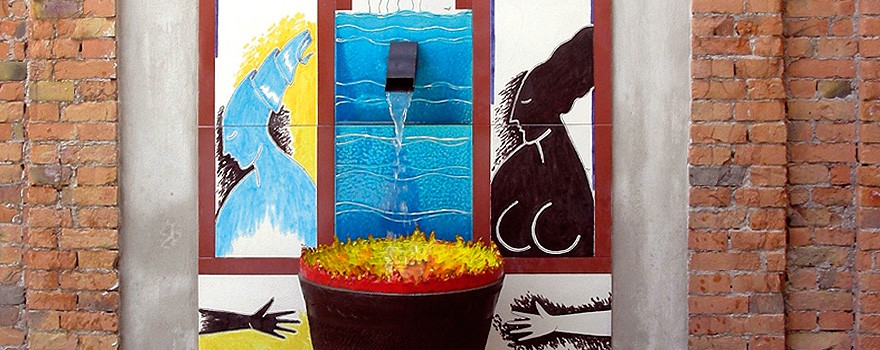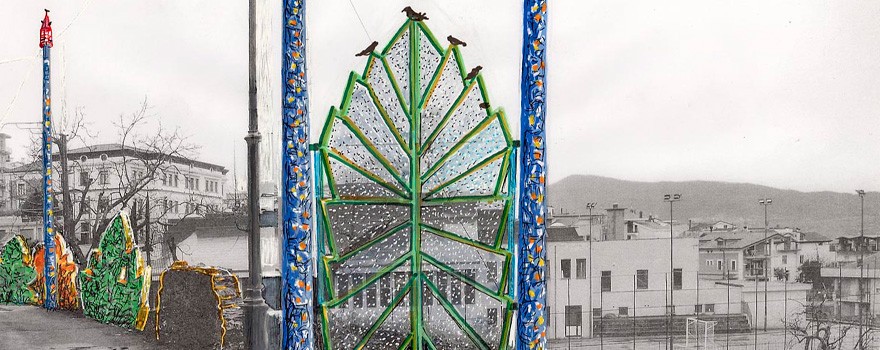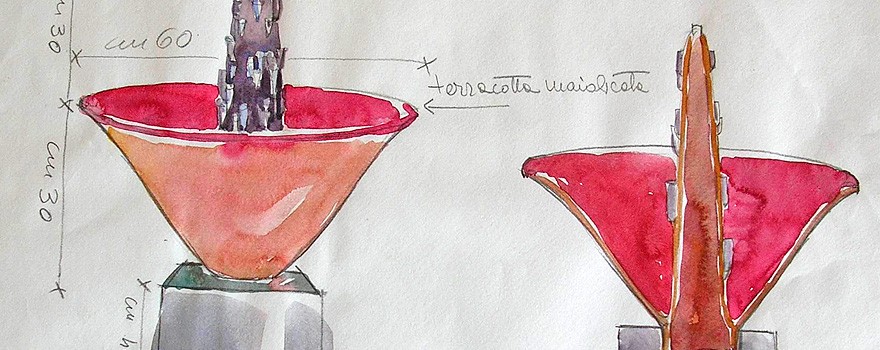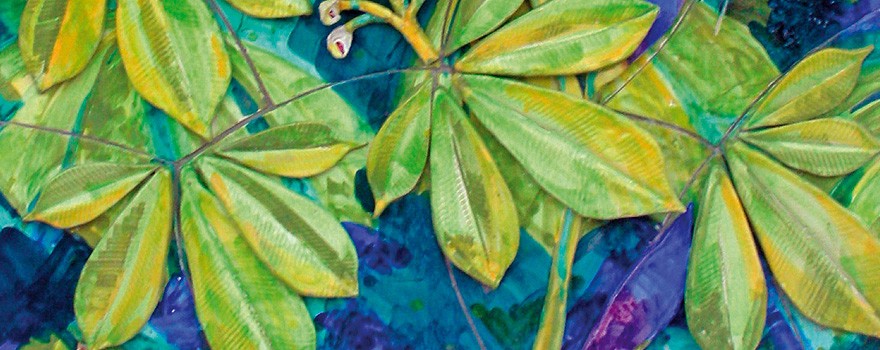 Sculpture
Sculpture “Towns act as mediators between the past and the future, making the future more accessible to us or obstructing our path. I believe that towns create a temporal relationship for their inhabitants and put them, somehow, in a no one’s land between the past and the future”. It is what Wim Wenders wrote in the eighties, offering us his glance on a town and on its identity. Such view has linked the several projects of the program “HotelTown” that theMunicipalityofGiffoni Sei Casaliand the whole community have been carrying out for a few years.
The realization today of new interventions by artists like UgoLa Pietraand Marco Pellizzola belongs within a program of installation of sculptures, intended to equip the whole town territory with poetic elements, expressions of the contemporary creative languages: it is a program started already in 2003 with setting up of the first sculptures by the artists Renato Barisani, Nicola, Salvatore, Angelo Casciello, Carmine Limatola and Vincenzo Frattini, enriched of new works by the following installations of Carmine Calvanese, Vincenzo Caruso, Gerardo Di Fiore, Nello Ferrigno, Wanda Fiscina, Antonio Lo Pinto, Angelomichele Risi, Fës-Vincenzo Ruocco, Marco Fusco, Giuseppe Fusco, Luigi Vollaro, Bernd Zimmer and Annibale Oste to whom we owe the Tree of Picentini in the hamlet of Malche, that portrays the landscape of Picentini Mountains.
The Museum of Environmental Art of Giffoni Sei Casali – according to the notes of esteemed researchers like Cesare De Seta – is to be considered as experimental laboratory for a new planning methodology for interventions in the town and in the territory, that looks at the present experiences of contemporary sculpture, connecting them with the desire of conquering social places and spaces, and thus sizing up the necessity to equip towns with imaginative bodies, with presences that stimulate a creative dialogue with the contemporary world.
It is a way to think about organization of the community intended as active center, and at the same time to open the old-town center, or rather the dimension of its social space, to the collective imagery, where it is possible to establish a direct link with the anthropological essence, with the roots of the community. The need is to reflect on the vitality of Arts, or on their being expression of the social body’s “wish”. Plans therefore urged by an interest for history, whose evaluation is marked above all by the personal memory and by the active fringes of the collective memory, this last considered assubject matter of present times.
The idea of regarding the urban space as contemporary, mouldable subject, has pressed the administrators to interventions having “lightness” as their leading dictate, on which is relying the value of a project orientated to the future and that accepts the characteristic metamorphosis in the time: to establish, in accordance with the aspiration set in the program of tourism expansion of the whole area, a dialogue between history and contemporaneity. This means to reflect on the “models” or, specifically, to insist on the value of quality, on those signs – to be introduced in the urban fabric – that are not celebration of the memory or signs exhibited as a trophy of homologation and assertion of international worldly things behind which so many interventions done in the cities today are often entrenched.
By increasing the value of the sites, giving them both historical identity and modernity, Giffoni Sei Casali has chosen to make of its territory and community a location of excellence.
Forms and languages
of present times
for a hospitable land…








